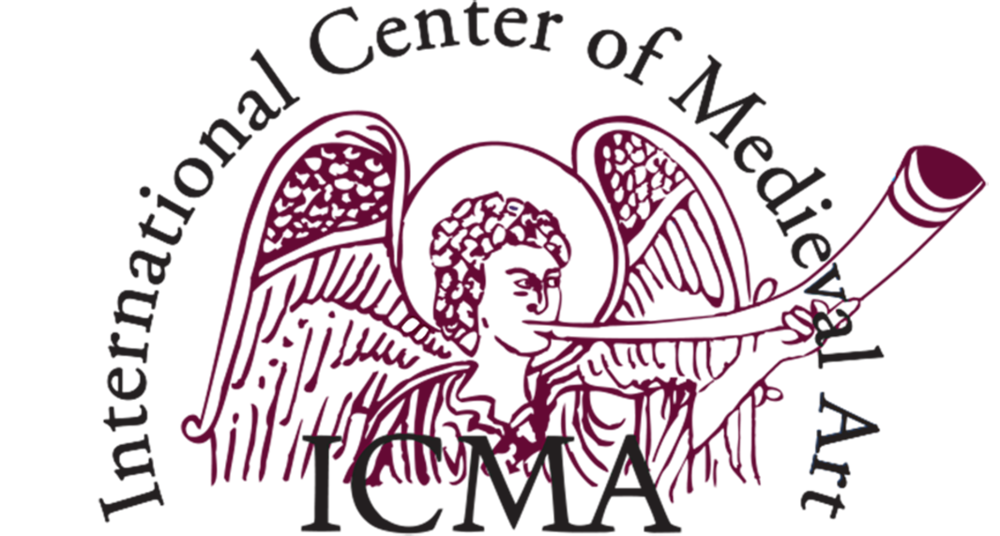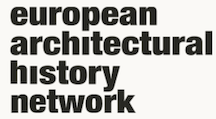In medieval art, the theme of the threshold, as the passage from one dimension to another, is crucial from a symbolic point of view and involves both spatiality and temporality (T. Bawden, Die Schwelle im Mittelalter, 2014). The definition that Christ gives of himself in the Gospel had great resonance in the realm of the sacred: “I am the door; if anyone enters through me, he will be saved” (Jn 10:9). Hence the high significance that Christianity attributes to the boundary between the human and the transcendent, between sin and salvation. Within the domain of representation, this message is conveyed both on a figurative level and in instances where lines of demarcation are drawn between the earthly world and the hereafter (P. Florenskij, Iconostasis, 1996). It is expressed also in architecture, as witnessed by the density of inscriptions and artistic expressions at the entrances to places of worship (M. Pastoureau, Tympans et portails romans, 2014) and, within them, between the space reserved for the faithful and the presbytery. The concept of the threshold is also linked to the temporal structuring of festivities, from the anxious anticipation on the eve to the celebration itself. A prime example of this can be found in the rite of baptism and the significance attributed to the spaces in which it takes place (R.M. Jensen, Living Water, 2011). These spaces are meticulously constructed and embellished with great creative effort, with multisensory mises-en-scène playing a pivotal role in the experience. The monumentalisation of entrances, rites of passage, and liminal zones exerts an influence on the secular world, manifesting in the form of urban infrastructure, such as city walls, as well as in the entrances to princely residences and military fortresses. Nor, on the other hand, would it be fair to separate the secular dimension from the religious one: suffice it to consider the fact that in Byzantium Iconoclasm began in 726 with the order - given by Leo III the Isauric - to remove the effigy of Christ on the Chalke, the gate of the imperial palace in Constantinople.
In the Early modern period until the Enlightenment, the European cultural universe has expanded and transformed beyond the borders of the Pillars of Hercules (F.A. Yates, Astrea. The Imperial Theme in the Sixteenth Century, 1975). The introduction of unprecedented objects, naturalia and mirabilia to the European continent, as evidenced by a prolonged process extending throughout the 17th century, significantly influenced the prevailing mentalities of the era, thereby facilitating new forms of experimentation and figurative elaboration. The dissemination of knowledge from unknown civilisations, as exemplified by renowned Jesuits such as the geographer, mathematician and cartographer Matteo Ricci of Macerata and later Athanasius Kircher, who pioneered a form of Egyptology, resulted in the generation of new ways of contamination and unprecedented cross-fertilisation at the intersection of the ‘imaginary’ and the ‘imagined’ East. The encounter with the ‘other’ thus becomes a crucial interpretative framework, imbued with political and propagandistic connotations, and alternative forms of knowledge that are articulated through diverse media (an example of this is the encounter/clash with the infidels of the faith, in a paradigm where the image of the Turk become a symbol of the evil, following the political instability of the Mediterranean region - see for example, Images in the Borderlands, eds I. Čapeta Rakić, G. Capriotti, 2022). In this sense, the concept of threshold can be considered as a flexible framework that can be applied at will when exploring the ‘history’ of a cultural product in the broadest sense, as the outcome of a process of double-edged correspondence between one civilisation and another. Early modern period is in itself a season in which crossing a threshold becomes crossing a limit, whether geographical or cultural and esthetical as well, towards a “new unexplored worlds”. This development was significantly furthered by the revolution that followed the scientific discoveries of Galileo (1564-1642). Once considered insurmountable and as a limit (be it for political, religious, philosophical or technological reasons), the threshold is transformed, metaphorically speaking, into a springboard towards the globalised world (T. Brook, Vermeer’s Hat. The Seventeenth Century and the Dawn of the Global World, 2006).
In more recent times, the out-of-frame device has prompted a heated debate in the arts, spanning from painting (V. Stoichita, A Short History of the Shadow, 1997) to cinema (A. Bazin, What is Cinema?, 1967; D. Morgan, The Lure of the Image, 2021). In the context of the ongoing development of virtual, immersive and interactive spaces, the distinction between image and reality is increasingly blurring (P. Conte, Unframing Aesthetics, 2020; A. Pinotti, Alla soglia dell'immagine, 2021). At the same time, the vanishing boundary between human contribution and generative development is the object of studies investigating the historical, aesthetical and ethical ramifications of artificial intelligence (R. Pedrazzi, Futuri possibili, 2021; M. Pasquinelli, The Eye of the Master, 2023; L. Manovich, E. Arielli, Artificial Aesthetics, 2024). In the context of the Cultural Cold War Studies, the concept of the threshold comes into play by questioning an alleged impenetrability of the Iron Curtain, whose points of contact are instead probed as generators of cultural, artistic and exhibition practices. Thresholds is the title of the exhibition hosted in the German pavilion at the Venice Art Biennale in 2024 as the debut, in the history of German participation, of a venue outside Giardini, in line with that ‘expanded format’ to multiple possibilities - physical or virtual - that characterises the format of Biennials on a global scale (C. Jones, The Global Work of Art, 2017). Finally, the concept of trespassing, in the sense of insisting on demarcation lines and on their political, social and cultural implications, is the object of artistic and curatorial practices that can be ascribed to the broader interdisciplinary field of the Border Studies.
As is now customary, the 2025 issue will also welcome a number of contributions outside the monographic theme, in the specific section Alia itinera.
CALL FOR ABSTRACTS:
Abstract of approx. 2000 characters (including spaces), in the language of the article, with a title proposal.
Only proposals from scholars holding a Ph.D may be considered.
ABSTRACT DEADLINES:
Abstracts deadline: 31 March 2025
Notification of accepted abstracts: 14 April 2025
CALL FOR SELECTED PAPERS:
Admissible length: between 30,000 and 40,000 characters, including spaces and footnotes (not included in the final count: abstract, captions, bibliography).
The essay must be written according to the editorial standards of the journal.
The essay must also include:
an abstract in English of approx. 1000 characters including spaces;
5 keywords in English;
a final, complete bibliography, written in alphabetical order according to Edizioni Ca' Foscari editorial standards;
image captions including photo credits.
Illustrations: max 10 images, in Jpeg format, 300 dpi resolution, with specification of credits already paid or authorised.
Languages allowed: Italian, English, French.
DEADLINES FOR ARTICLES
Deadline for the final version: 31 August 2025
FOR FURTHER INFORMATION
Please contact venezia.arti@unive.it.




















